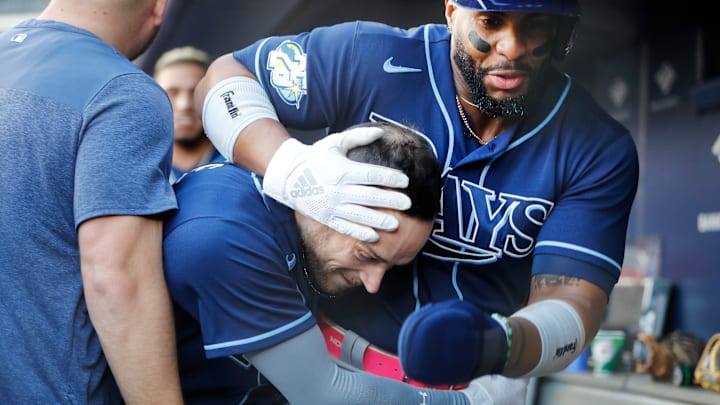The post-Pete Alonso era is dawning in Queens, and the New York Mets could be facing the monumental task of replacing their franchise icon. With Alonso and his prolific power possibly departing in free agency after the 2025 season, President of Baseball Operations David Stearns could have a massive, Polar Bear-sized hole to fill at first base. The free-agent market is notoriously thin, with Josh Naylor representing the best (and still inferior) option, forcing the Mets to turn to the trade market.
Naturally, this has led to conversations with the Tampa Bay Rays, a frequent trade partner for forward-thinking front offices. The most logical target, and one the Mets reportedly discussed a deal for at last season's deadline, is Yandy Diaz. Diaz is an attractive fit: he won the AL batting title in 2023 and is a high-contact, low-strikeout machine, a profile the Mets desperately need. But the Rays, who rarely sell low, will command a high price for their affordable 1B/DH. Instead of paying retail for Diaz, the Mets should pivot to a "buy-low" opportunity on another Rays All-Star, one whose defensive struggles make him the perfect change-of-position project, Brandon Lowe.
The case for Brandon Lowe at first base
At first glance, Lowe seems like an odd fit. He’s a two-time All-Star second baseman, a position the Mets have capably filled. But Lowe’s value has never been in his glove, and the 2025 season made that painfully clear. To put it bluntly, Lowe was arguably the worst defensive player in baseball last season, and the advanced metrics are damning. He posted a catastrophic -12 Defensive Runs Saved (DRS) and a -10 Outs Above Average (OAA), ranking him at the very bottom of all qualified second basemen. He has become a complete liability in the middle infield, which is precisely why the Mets should acquire him to stop playing there.
By trading for Lowe and immediately moving him across the diamond to first base, the Mets would be executing a perfect analytical gambit: acquiring an elite bat by paying for a toxic glove, and then simply throwing the glove away. The defensive bar at first base is exponentially lower, allowing his bat to play up. Lowe is entering the final option year of his contract, giving the Rays every incentive to move him before his value craters completely. This is the exact type of distressed asset Stearns should be targeting.
Lowe’s 2025 offensive campaign was a picture-perfect summary of his career. He provided significant power, launching 31 home runs with 83 RBI in 134 games for the Rays. However, it came with a low batting average (.254) and a concerningly low on-base percentage (.307), driven by a sharp drop in his walk rate. Despite the middling .784 OPS, the underlying Statcast data—the "engine"—remains elite. The Mets wouldn’t be trading for his 2025 slash line; they would be trading for his raw, game-changing power.
That power is defined by a career-long ability to demolish baseballs. Lowe’s career Statcast profile shows a hitter who consistently ranks in the 90th percentile or higher in Barrel rate, his true calling card. He combines that with an elite average exit velocity (often 91-92 mph) and a HardHit% that regularly sits north of 45%. This is the offensive core of a 40-homer-potential slugger. The trade-off, and it’s a significant one, is his swing-and-miss. Lowe’s career strikeout rate (K%) hovers around 27-30%, and his walk rate (BB%), while historically solid at over 10%, dipped to a concerning 6.9% in 2025.
While Diaz offers the safer floor, Lowe offers the ceiling the Mets are losing with Alonso. He is the quintessential three-true-outcomes slugger, bringing massive power from the left side of the plate. By acquiring him to play a mix of 2B against righties but primarily 1B—where his defensive metrics can’t hurt him—the Mets would be adding a premium offensive weapon at a fraction of the prospect cost. It’s a high-risk, high-reward move that could brilliantly solve the Mets' power deficit in 2026.
